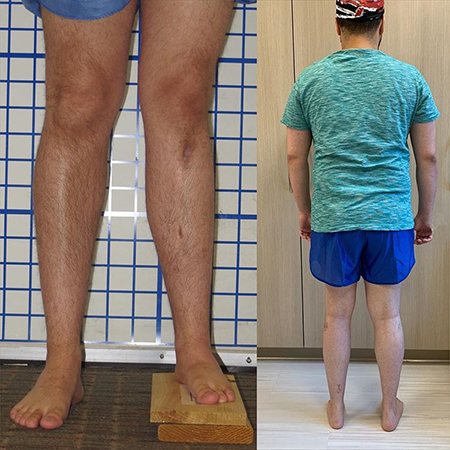
There are many types of foot deformities, which may involve the foot bone, ankle, heel, tendon, or toes. There are several reasons someone may have a foot deformity: they were born with it, they had an accident that caused it, or it developed over time due to a wear-and-tear condition, such as arthritis. A foot deformity can also be a condition of an inherited disease, such as muscular dystrophy.
Foot deformities can usually be identified simply through a visual exam. However, to better understand your foot deformity, your orthopaedic surgeon will likely take X-rays of your foot. Additional tests may be ordered, depending on the type of foot deformity you have. The most common deformity problems include:
The treatment your orthopaedist recommends will depend on the cause of your foot deformity. If your deformity is due to an accident or injury, surgery can sometimes be avoided, as the deformity may correct itself. However, that is not always the case.
Therefore, only a knowledgeable orthopaedist should diagnosis you and recommend treatment.
Prior to recommending surgery to correct your deformity, your orthopaedic surgeon may prescribe orthopaedic shoes, orthotics, custom shoe inserts, splints, or medications. While these nonsurgical options may help reduce or eliminate pain, they will not correct the deformity itself.
If nonsurgical treatments are not helpful or no longer reduce pain, your orthopaedic surgeon may recommend a surgical procedure to correct your deformity.
Most surgical procedures for a deformity are performed to relieve pain and swelling and to correct the deformity so the patient can walk normally. However, if your deformity is severe and causes pain when you walk or interferes with your daily activities or your work, a surgical procedure may be the best option. You should not undergo a deformity operation if the only reason is to change the appearance of your foot.
Depending on the type of deformity you have and your situation, you may have an outpatient operation or one that is done under general anesthesia in the hospital. It is also important to know that, for some types of foot deformities, more than one type of procedure may be possible. That is why it is important to work with an experienced orthopaedist you can trust who can educate you and guide you to the best options.
Regardless of the type of operation you have, your post-operation will likely follow standard protocols. You will go to a recovery room where you will be monitored. For the first few days after surgery, you will keep your foot elevated as much as possible to reduce swelling. Your orthopaedist may also provide pain medications and have you ice your foot to help reduce swelling and pain. You may be given a cast or protective boot to wear for several weeks.
Depending on the type of surgery you have to correct your deformity and the severity of your condition, your recovery could take several months or longer. Also, after a procedure for a deformity, you will typically need to use crutches and avoid putting weight on your foot for several weeks. Your orthopaedist may also recommend exercises for you that will help you regain muscle strength and learn to walk correctly, or he or she may refer you to a physical therapist who can assist you in your rehabilitation.
As with any surgery, there is a risk of infection or blood clots. Also, it is important to follow Dr Sujoy Bhattacharjee instructions regarding proper foot care after deformity surgery to help ensure your foot heals properly.